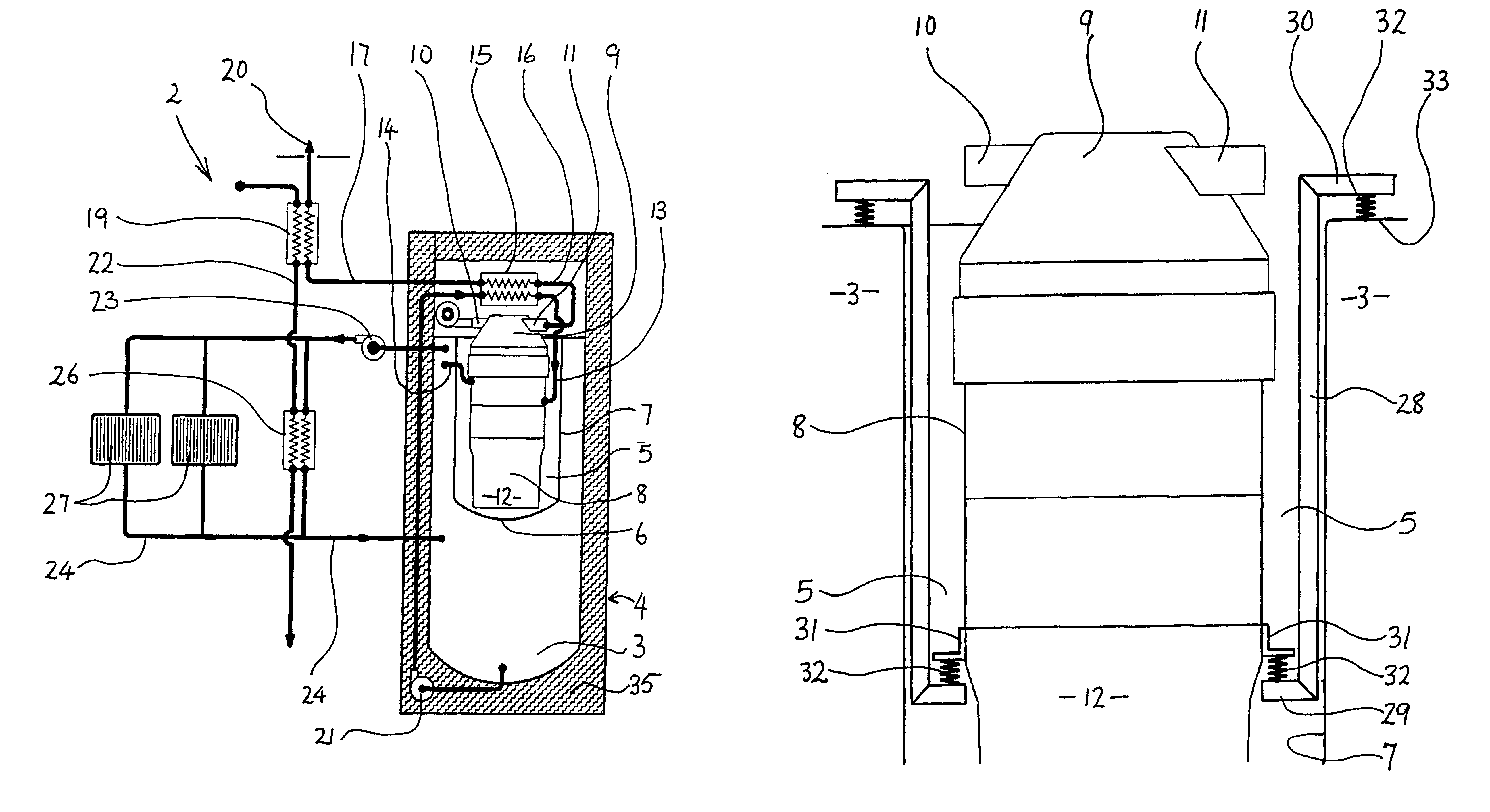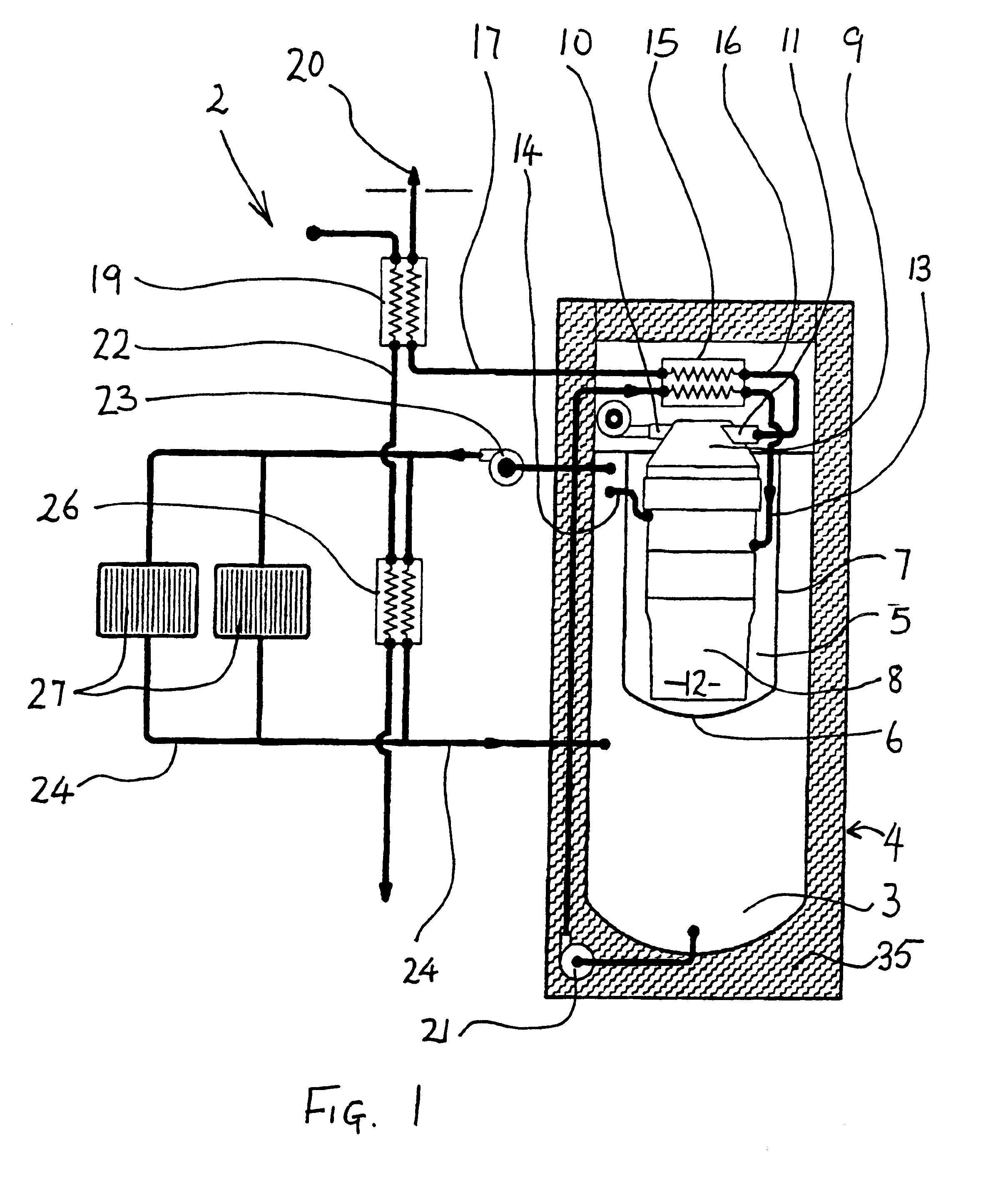Co-generation system employing a stirling engine
- Summary
- Abstract
- Description
- Claims
- Application Information
AI Technical Summary
Benefits of technology
Problems solved by technology
Method used
Image
Examples
first embodiment
In this first embodiment of the co-generation system 2, the direction of the primary water from the storage tank 3 is as follows: from storage tank 3 the water is moved via the pump 21 to the first heat exchanger 15. From the first heat exchanger 15 the partially heated primary water is transferred through the primary pipe 13 to act as coolant water for the engine 8. From the engine 8, the primary pipe 14 carries the fully heated primary water to the storage tank 3 where it is stored until used in the space heating reticulation as described below.
The heated primary water stored in the storage tank 3 is used for space heating, in known manner, in a reticulation system in the building, by the operation of a pump 23, a secondary pipe 24 and water space heaters 27. With appropriate valves and taps (not shown) a water / water heat exchanger 26 can be switching into this reticulation system. The water / water heat exchanger 26 is used to further heat potable hot water for later use. In additi...
second embodiment
the co-generation system 102 is shown in FIG. 3. Like numbered parts, performing in similar manner, or being the same as in the first embodiment of the co-generation system 2, have the same number.
In this embodiment, the heat exchange in the reticulation system occurring between the primary water in the storage tank 3 and the water space heaters 27 and heat exchanger 26 is identical to the arrangement in the first preferred co-generation system 2. However, the arrangement of heat exchange of the primary water with the exhaust gas and the engine 8 cooling is altered to a second preferred embodiment.
In this second embodiment of the co-generation system 102, the primary water from storage tank 3 leaves storage tank 3 via the pump 21 and enters the engine 8 to act as the engine 8 coolant. The primary pipe 114 transfers the partially heated primary water to the first heat exchanger 15. The primary pipe 113 transfers the now fully heated primary water back to the storage tank 3.
Thus, in t...
third embodiment
In this third embodiment of the co-generation system 202, the movement of the primary water from the storage tank 3 to the engine 8, and from the storage tank 3 to the space heating reticulation by the pump 23 ensures movement of the water within the storage tank 3, so that layering of heat within the storage tank 3 does not occur. This ensures that the heat exchange via heat exchanger 215 operates at the maximum possible efficiency. The coil heat exchanger 215 is shown in FIG. 4 as being immediately adjacent the engine 8 within the storage tank 3. However, it will be appreciated that the placement of the coil heat exchanger 215 may be at any point within the storage tank 3 for convenience and maximum efficiency of operation.
In the second and third embodiments (FIGS. 3 and 4) the mounting of the engine 8 is as described above for the first preferred embodiment of the co-generation system 2.
The co-generation system (2, 102, 202) has been described with reference to a Stirling engine ...
PUM
| Property | Measurement | Unit |
|---|---|---|
| Force | aaaaa | aaaaa |
| Heat | aaaaa | aaaaa |
Abstract
Description
Claims
Application Information
 Login to View More
Login to View More - R&D
- Intellectual Property
- Life Sciences
- Materials
- Tech Scout
- Unparalleled Data Quality
- Higher Quality Content
- 60% Fewer Hallucinations
Browse by: Latest US Patents, China's latest patents, Technical Efficacy Thesaurus, Application Domain, Technology Topic, Popular Technical Reports.
© 2025 PatSnap. All rights reserved.Legal|Privacy policy|Modern Slavery Act Transparency Statement|Sitemap|About US| Contact US: help@patsnap.com



